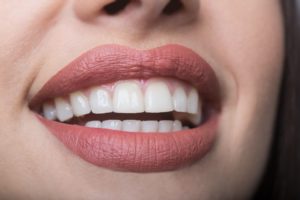 When it comes to taking care of your smile, it’s probably your teeth that get most of your attention, but in reality, your gums matter just as much for your oral health. Without healthy gums, a strong and attractive smile is basically impossible! September is actually National Gum Care Month, so today, we’re going to cover how to prevent, detect, and treat the biggest threat to their health: gum disease.
When it comes to taking care of your smile, it’s probably your teeth that get most of your attention, but in reality, your gums matter just as much for your oral health. Without healthy gums, a strong and attractive smile is basically impossible! September is actually National Gum Care Month, so today, we’re going to cover how to prevent, detect, and treat the biggest threat to their health: gum disease.
What is Gum Disease?
If you don’t brush and floss regularly, plaque and tartar can accumulate on your teeth and lead to cavities, and you’ve probably known about this since you were a small child. But, these substances can also cause an infection to develop that attacks your gums. This is gum disease, and it’s actually the most common oral health problem in the world. Your gums provide essential support for your teeth and protect the delicate enamel located around the roots, so when gum disease bacteria begins to break this tissue down, it can lead to all kinds of unpleasant symptoms:
- Gums that bleed easily
- Redness, swelling, and tenderness
- Chronic bad breath
- Gum recession
- Loose teeth
- Tooth loss
In fact, gum disease is the leading cause of adult tooth loss around the world, and there is an increasing number of studies that show it’s linked to an increased risk of diabetes, heart disease, and even Alzheimer’s.
The 1-2-3 of Preventing Gum Disease
Fortunately, preventing this infection is relatively straightforward, and you’re probably already familiar with the best ways to do it. This breaks down into three simple steps:
- Brush your teeth at least twice a day for two minutes each, paying special attention to clean the area where your teeth and gums meet.
- Floss once in the evening. When flossing, don’t simply “saw” the floss back and forth—be sure to move it up and down the side of each tooth to remove any plaque and bacteria your brush missed.
- Every six months, visit your dentist for a checkup and cleaning. A hygienist will be able to remove plaque and tartar from those areas of your mouth that your tools at home can’t reach.
What Should You Do If You Have Gum Disease?
If one or more of the symptoms above sound familiar, then you’re far from alone, as it’s estimated that about 75% of the US adult population has at least a mild form of gum disease. As soon as you think there is an issue, the best thing you can do is contact your dentist. With a quick exam, they’ll be able to determine whether or not you have the infection, and if you do, they can offer a variety of solutions:
- A special cleaning called scaling & root planing that specifically removes plaque, tartar, and bacteria from below the gum line.
- Topical antibiotics that eliminate bacteria in the small spaces between your teeth and gums.
- For advanced cases, they can refer you to a trusted specialist (periodontist) who can offer more involved services like gum surgery and treatments for gum recession.
Starting this September, don’t just clean your teeth every day, but your gums as well! As a result, your smile will look better, feel better, and you’ll also be safeguarding yourself from other serious health issues…that’s certainly worth the time it takes to brush your teeth!
About the Author
Dr. Michael Kirk is a family and cosmetic dentist based in Oklahoma City with over 25 years of experience. Every day, he and his team use the latest technology and techniques to help patients overcome the most common dental issues, including gum disease. If you or a family member are showing any signs of this infection, he can take care of it right away before it becomes worse. To ask questions or schedule an appointment, Dr. Kirk can be contacted through his website.

